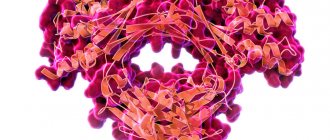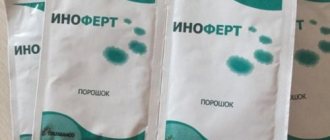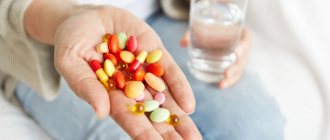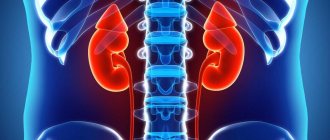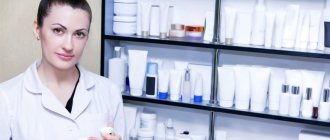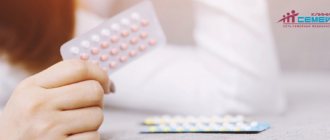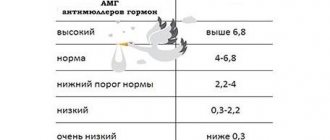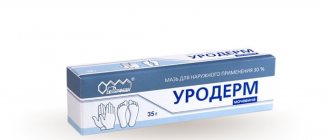The movement of sperm depends directly on the density of the sperm and the structure of the cells themselves. The speed and direction of movement of sperm depends on their tail.
One of the frequently asked questions of men who are faced with the problem of low-motile sperm in the spermogram is: “How to check sperm activity and how to increase sperm activity?” First of all, you should take a spermogram in compliance with all the requirements and recommendations of the doctor. This will allow you to get a reliable result and prescribe the correct treatment in a timely manner.
A classification has been adopted throughout the world that divides sperm motility into the following categories:
- Category A is the germ cells that move quickly along a straight or slightly curved path. Their movement speed is at least 25 µm/s. We can talk about good seminal fluid if the number of germ cells from category A is 32 percent or more.
- Category B - sperm with reduced mobility, but their movement is linear.
- Category C is spermatozoa that move in the form of oscillatory movements or in a small circle as a result of a violation of the structure of the neck and their tail.
- Category D is completely immobile germ cells. in some cases, the reason for their lack of movement may be prolonged abstinence from any type of ejaculation.
What does sperm activity depend on?
Sperm are formed in the testicle and are initially immobile; only when they mature do they begin to move. The speed and other nuances of this movement, for example the trajectory, depend on the external and internal mechanisms of the body and the structure of the germ cells.
The sperm consists of a head and a tail, the latter, thanks to rhythmic movements, moves. The rhythm of tail movements depends on the internal mechanisms of the body. Some scientists believe that the motility of male germ cells depends on the function of the cannabinoid receptor.
If we consider the activity of sperm at the chemical level, then movement is based on changes in the level of acidity: the male gamete moves to an area where acidity is reduced. Activity also depends on the following factors:
- The ability of a cell to contain volume;
- Decreased sperm viscosity;
- Decreased body temperature of the partner;
- A sufficient amount of calcium in the intercellular space;
- Long-term exposure to metals on the body.
These aspects depend on metabolic processes, chronic pathologies of the genitourinary system, infectious and inflammatory diseases: prostatitis, orchitis. Andrologists note the following body problems that predispose to loss of germ cell activity:
- Reduced androgen levels;
- Insufficient amount of micro and macroelements;
- Abuse of tobacco products, alcohol-containing products;
- Overheating of the scrotum area as a result of varicocele or external factors (visiting a sauna);
- Irregular or excessive sexual activity.
Definition
A low sperm count means that the fluid (sperm) you ejaculate during orgasm contains fewer sperm than normal.
Low sperm count is also called oligospermia. The complete absence of sperm is called azoospermia. The sperm count is considered below normal if there are less than 15 million sperm per milliliter of semen.
Having a low sperm count makes it less likely that one of your sperm will fertilize your partner's egg, resulting in pregnancy. However, many men with low sperm counts are still capable of becoming fathers.
What is a spermogram?
How is activity determined?
Laboratory assistants determine the ability of male cells to fertilize using a spermogram; sperm activity is directly visible on a kinesiogram. The expert places 2 drops of sperm on the diagnostic glasses, in which at least 100 male gametes are visible. Next, a comparison takes place; specialists calculate the number of sperm of the following groups: fast-moving, slow, with non-progressive movements (pendulum-like, oscillating) or immobile.
However, in international practice it is customary to use a mobility gradation consisting of only three groups:
- Group A : gametes move in a straight line, sometimes along a rounded trajectory at a speed of at least 25 µm/s;
- Group B : cells move in a circle with a small diameter, movements fluctuate, speed below 25 µm/s.
- Group C : immobile or extremely inactive gametes.
In a healthy man whose reproductive function is not impaired, the sperm should contain at least 32% of group A gametes.
Degrees of asthenozoospermia
There are 3 degrees of impaired sperm motility, which determines the severity of the disease and the choice of treatment tactics:
- Mild degree - motility retains a sufficient number of sperm of categories A and B (50%) for conception. The speed of movement is determined one hour after ejaculation. Achieving normal activity is achieved by adjusting lifestyle and nutrition.
- Medium degree - an hour after ejaculation, 70% of sperm become immobile. At this stage, they resort to prescribing bioactive pharmacological agents.
- Severe degree - 80–90% of sperm consists of immobile, atypical sperm. The patient faces complex treatment.
The classification was proposed by WHO and is used to diagnose male infertility in all clinics around the world. The degrees are determined based on the results of spermatoscopy.
How to properly prepare for a spermogram
Typically, in medical institutions, specialists suggest that a man donate sperm through masturbation. Under sterile conditions, it is possible to obtain biological material that accurately indicates the state of reproductive function. However, before taking the test, a man must adhere to the following rules:
- Three days before the test, you should avoid intimacy.
- Avoid stress and physical activity if possible.
- Stop smoking and drinking alcohol.
- If possible, do not take hormonal medications 1-2 days before the scheduled test. If you cannot stop taking your medication, you should tell your doctor.
- Immediately before submitting the material, observe intimate hygiene.
When treatment doesn't help
In rare cases, male infertility problems cannot be cured and the man cannot become a father. In this case, you and your partner may consider using donor sperm or adopting a child.
Lifestyle and Home Remedies
There are steps you can take at home to increase your chances of conceiving. Here are some of them:
- Increase the frequency of sexual intercourse. Having sex every day or every other day, starting at least four days before ovulation, will increase your chances of conceiving.
- Have sexual intercourse when fertilization is possible. A woman most often becomes pregnant during ovulation, which occurs in the middle of the menstrual cycle, between periods. This will ensure that sperm that can survive for several days will be present at ovulation.
- Avoid using lubricants. Some products, such as Astroglide or KY gel, as well as lotions and saliva, can impair sperm function and motility. Ask your doctor about lubricants that are not harmful to sperm.
Alternative medicine
There is still little evidence on whether herbs and supplements can help increase male fertility and how effective they are. None of these supplements treat a specific underlying cause of infertility, such as a sperm defect or chromosomal disorder. Some supplements may only help if you have a deficiency.
Supplements that have been shown to have potential benefits for increasing sperm count or quality in studies include:
- Alpha lipoic acid
- Anthocyanins
- L-arginine
- Astaxanthin
- Beta carotene
- Biotin
- Acetyl-L-carnitine
- L-carnitine
- Cobalamin
- Coenzyme Q10
- Ethylcysteine
- Folic acid
- Glutathione
- Inositol
- Lycopene
- Magnesium
- N-acetylcysteine
- Pentoxifylline
- Phosphodiesterase type 5 inhibitors
- Polyunsaturated fatty acids
- Selenium
- Vitamins A, C, D and E
- Zinc
Consult your doctor before taking dietary supplements to review the risks and benefits of this therapy. Taking some supplements in large doses (mega doses) or over a long period of time may be harmful.
Diagnosis of sperm condition
A spermogram will indicate the level of activity of male reproductive cells. If a low level is confirmed, the andrologist moves on to a more thorough diagnosis. It is important to find out the reasons for the deviation from the norm, as well as to determine the possible consequences of the anomaly.
The doctor prescribes:
- General urine tests, blood tests, urethral smears, prostate secretions;
- Biochemical blood test for hormones (especially attention is paid to the amount of sex hormones);
- Tests for HIV, STDs.
An ultrasound of the pelvic organs, an ultrasound of the scrotum and penis with an additional Doppler study is required to determine the level of blood supply. If inflammatory processes or neoplasms are detected using ultrasound, additional diagnostic techniques are chosen: biopsy, endoscopy.
Symptoms
The main symptom of a low sperm count is the inability to conceive a child. There may be no other obvious signs or symptoms. In some cases, an underlying medical condition such as an inherited chromosomal abnormality, hormonal imbalance, enlarged testicular veins, or a condition that blocks the passage of sperm may cause signs and symptoms. Symptoms of low sperm count may include:
- Problems with sexual function, such as low sex drive or difficulty maintaining an erection (erectile dysfunction)
- Pain, swelling, or swelling in the testicular area
- A small amount of facial and body hair or other signs of abnormalities related to chromosomes or hormones
When to see a doctor
Contact your doctor if you have been unable to conceive after a year of regular, unprotected sex, or sooner if you have any of the following:
- Problems with erection or ejaculation, low sex drive, or other problems with sexual function
- Pain, discomfort, swelling or swelling in the testicular area
- Have had problems with your testicles, prostate or sexual function in the past
- There were operations in the groin, testicles, penis, scrotum
How to improve sperm activity
After a thorough examination, the andrologist develops a program to correct the problem. Treatment is always complex: it is important to influence the cause of decreased activity of male germ cells, restore metabolism and consolidate the result.
Sometimes it is enough to reduce physical activity, change your diet or take a course of vitamin supplements. But in serious situations, you cannot do without taking medications, as well as auxiliary methods of therapy.
If a decrease in sperm quality occurs due to structural changes in the organs of the genitourinary system, doctors choose surgical treatment. Surgical methods of andrology are used for developed varicocele, hydrocele, and testicular dystrophy.
Drug therapy
The choice of drug depends on the root cause of the decrease in activity:
- Anti-inflammatory . Doctors prescribe them in the presence of inflammatory processes of various types.
- Hormone replacement therapy . If the cause of the problem lies in a lack of androgens or other hormones, the andrologist chooses a synthetic substitute.
- Gonadotropins . They improve the consistency of sperm, reduce its viscosity, and stimulate the motility of gametes.
- Means that normalize blood circulation.
- Vitamin complexes : zinc, selenium, vitamins B, E, A, C.
Doctors choose the form of medications, their course and dosage on an individual basis.
Physiotherapy
Physiotherapeutic procedures are aimed at restoring blood microcirculation in the pelvic organs and normalizing metabolic processes. Doctors choose:
- Magnetotherapy;
- Ultrasound therapy;
- Electro and phonophoresis;
- UHF.
Diet for men's health
Proper nutrition is the key to healthy men's health. First of all, you need to distribute the main amount of the daily diet into 5-6 parts. Each part should contain carbohydrates, proteins, fats, and fiber. The main emphasis should be placed on products containing zinc, selenium, vitamin E, A, C:
- Green onions;
- Parsley;
- Tomatoes;
- Turnip;
- Radish;
- Cucumbers;
- Zucchini;
- Cereals;
- Fruits;
- Lean meat, fish;
- Liver;
- Nuts;
- Vegetable oils.
Fried, salty, pickled and fatty foods will have to be avoided during treatment. After it, such dishes should also not become the main ones.
The drinking regime should be observed; a man should drink at least 1.5 liters of water, if there are no other indications.
Exercise therapy and massage
Therapeutic exercise and massages are also aimed at restoring blood circulation and activating sperm. Exercise therapy complexes mainly include exercises that involve the small pelvis. For general strengthening, doctors advise exercising regularly.
Massages must be performed by a professional. He will choose the course, type and other nuances based on the individual characteristics of the patient.
Treatment and medications
If sperm count is low, treatment includes:
- Surgery. For example, varicoceles can often be corrected surgically, or damage to the vas deferens can be repaired. It is possible to reverse a vasectomy performed in the past. In cases where there are no sperm in the ejaculate, they can be retrieved directly from the testicles or epididymis using a sperm retrieval technique.
- Treatment of infections. Antibiotics can treat a reproductive tract infection, but this does not always restore fertility.
- Treatment of problems associated with sexual intercourse. Medications or counseling can help restore fertility in cases of conditions such as erectile dysfunction or premature ejaculation.
- Hormonal therapy. Your doctor may recommend testosterone replacement therapy or medications in cases where the cause of infertility is high or low levels of hormones or problems with the way the body uses these hormones.
- Assisted reproductive technology (ART). Depending on your specific case and preferences, ART includes obtaining sperm through normal ejaculation, surgical sperm retrieval, or sperm collection from human donors. After this, the sperm is introduced into the female genital tract or the method of in vitro fertilization or intracytoplasmic sperm injection is used.
Consolidation of the result: preservation of sperm activity
Andrologists advise adhering to the following rules when treating the problem and after it:
- Wear underwear that fits properly, giving preference to cotton materials.
- Do not take hot baths often, do not visit baths, saunas.
- Do not abuse alcoholic beverages.
- Stop smoking.
- Adjust the intake of vital medications (on the doctor’s recommendation, replace the drug, adjust the dosage or course of administration).
- Eliminate stress and emotional overload.
- Give preference to intimacy with a regular partner.
- Give up a sedentary lifestyle. Regularly carry out exercises and sets of exercises to prevent stagnation of blood circulation in the pelvic organs.
Doctors advise adhering to these measures constantly. Only a man’s responsible attitude towards his own health will save him from problems with reproductive function and other pathologies.
The information is provided for informational purposes only! If you have questions, we recommend scheduling a consultation with a urologist.
Risk factors
A number of risk factors are associated with low sperm count and other problems that can cause low sperm count. These include:
- Smoking tobacco
- Alcohol consumption
- Use of certain illicit drugs
- Overweight
- Having certain infections in the past or present
- Exposure to toxins
- Overheating of the testicles
- Testicular injury
- Being born with a fertility disorder or having a blood relative with a fertility disorder
- Having certain medical conditions, including tumors and chronic diseases
- Cancer treatment, such as radiation
- Use of certain medications
- Previous vasectomy or major abdominal or pelvic surgery
- Undescended testicles in the past
Prevention
To protect your fertility, avoid known factors that can affect sperm quantity and quality. Eg:
- Do not smoke.
- Limit or abstain from drinking alcohol.
- Stay away from illegal drugs.
- Talk to your doctor about medications that may affect your sperm count.
- Maintain a healthy body weight.
- Avoid overheating.
- Fight stress.
- Avoid exposure to pesticides, heavy metals and other toxins.
About the laboratory
Specialized laboratory of spermatology
High professional level, the presence of its own certified laboratory, the use of innovative diagnostic and treatment technologies.
Services and prices Make an appointment by phone:
+7 495 199-7554
Address:
Moscow, Begovaya st., 7, Begovaya metro station - 8-10 minutes on foot
Laboratory opening hours
Mon - Fri 08:00-18:45 Sat - Sun 09:00-13:30 Technical break: 13:30 - 15:45
Appointment by phone:
Mon - Sun 09:00-20:00
Driving directions
Artificial insemination
This is assisted reproductive technology (ART), commonly referred to as IVF. IVF is a fertilization process in which the fertilization of an egg by a sperm is carried out manually in a laboratory vessel, and then the embryo is implanted in the uterus. Other forms of ART include gamete intrafallopian tube transfer (GIFT) and zygote intrafallopian tube transfer (ZIFT).
What is artificial insemination (IVF)?
There are five main stages of the IVF procedure and embryo transfer process:
- Control and stimulation of the development of healthy eggs in the ovaries.
- Collection of eggs.
- Collection and maintenance of sperm vital activity.
- Fusion of egg and sperm in the laboratory and providing the appropriate environment for fertilization and early growth of the embryo.
- Transfer of the embryo into the uterus.
Step 1: Medicines are prescribed to stimulate egg maturation. It is advisable to collect several eggs, as not all of them will continue to develop and be fertilized after retrieval. A transvaginal ultrasound is used to check the ovaries, and blood tests are also taken to check the levels of hormones in the blood.
Step 2: Through a minor surgical procedure, the eggs are retrieved. This uses ultrasound imaging: while watching the process on a monitor, the doctor uses hollow needles to extract the egg through the vaginal walls. To reduce potential discomfort, the patient is offered pain medications.
Step 3: The man is asked to provide a sperm sample, which is prepared to combine with the eggs.
Step 4: In a process called insemination, sperm and eggs are mixed and stored in a laboratory under conditions conducive to fertilization. In some cases where there is a lower chance of fertilization, intracytoplasmic sperm injection (ICSI) can be used. With this procedure, one sperm is injected directly into the egg to produce an embryo. To confirm fertilization, eggs are monitored. Fertilization is considered successful when cell division begins. Once this happens, the fertilized eggs are considered embryos.
Step 5: Embryos are typically transferred to a woman's uterus three to five days after the eggs are retrieved and fertilized. A catheter or small tube is inserted into the uterus to transfer the embryos. This procedure is painless for most women, although some may experience mild cramping. If the procedure is successful, implantation usually occurs six to ten days after egg retrieval.
Expert opinion of a doctor
Meshcheryakova Elena Alexandrovna
Urologist - andrologist
In the presence of poor morphology, pathological forms, the number of sperm with pathology of the head, flagellum, neck, as well as sperm with a cytoplasmic drop is indicated as a percentage. To improve sperm quality, you need to know which specific indicators are impaired and for what reason.

